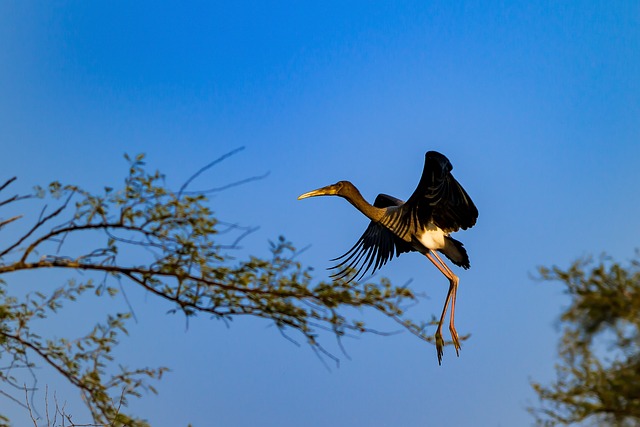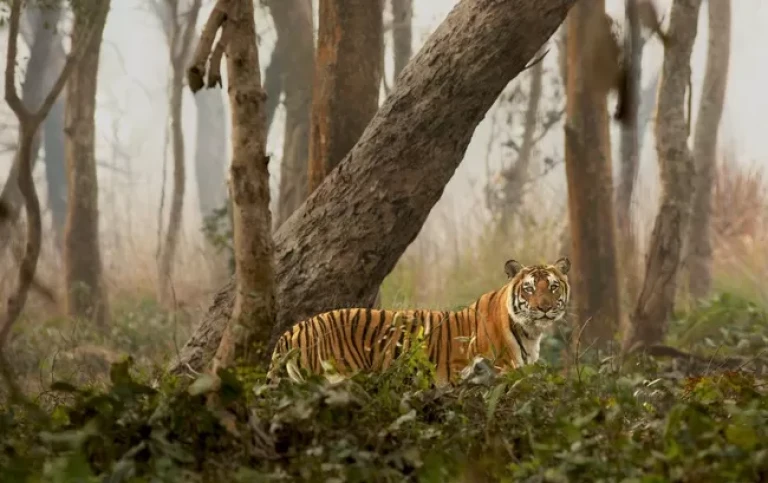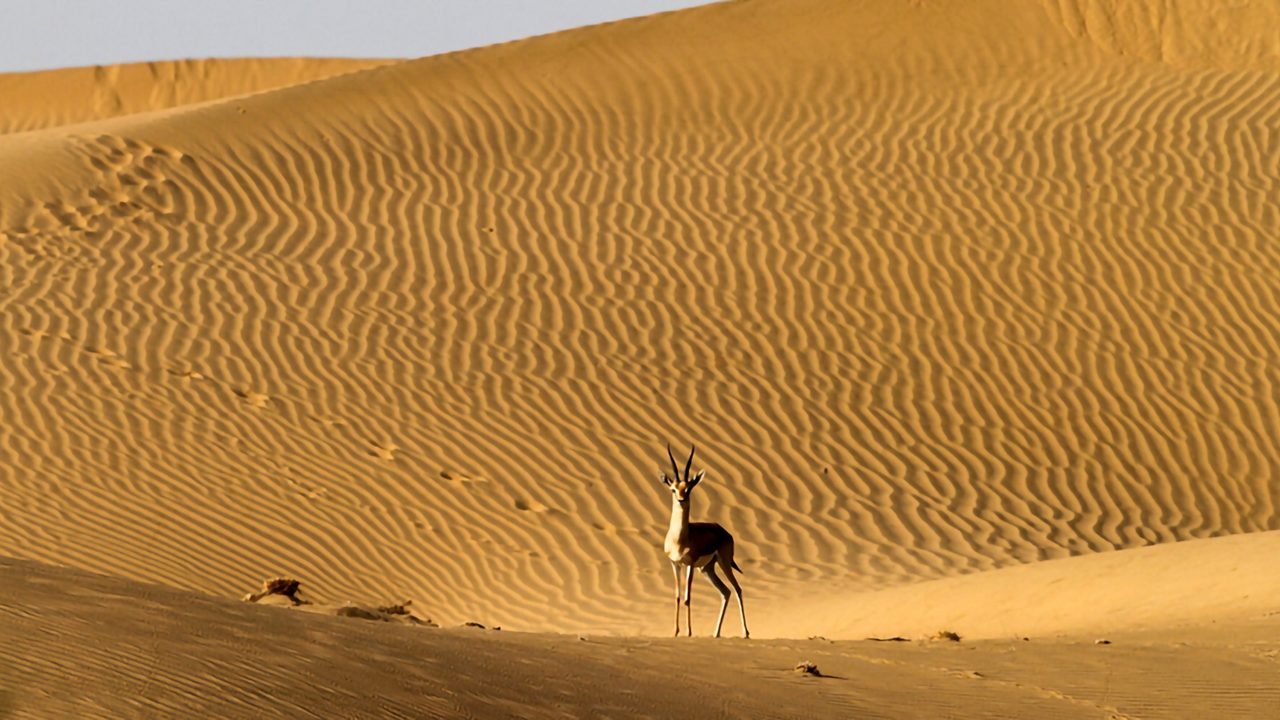North India's Famous Wildlife Sanctuary


North India’s Famous Wildlife Sanctuaries offer an unforgettable journey through nature’s finest landscapes, where majestic tigers, graceful deer, and colorful migratory birds thrive in harmony. From the dense forests of Uttarakhand and Rajasthan to the serene wetlands of Punjab and Uttar Pradesh, each sanctuary showcases the region’s rich biodiversity. These protected havens are perfect for wildlife lovers, birdwatchers, and adventure seekers who wish to explore the raw beauty and ecological treasures of North India.
Wiki Link: North India’s Famous Wildlife Sanctuary

Jim Corbett National Park
Ramnagar, Uttarakhand
India’s oldest national park, is a paradise for wildlife enthusiasts and photographers. Known for its thriving Bengal tiger population, it also shelters elephants, leopards, deer, and more than 600 bird species. Nestled at the foothills of the Himalayas, the park offers a blend of dense forests, grasslands, and riverine belts.
The Ramganga River adds to its scenic charm and supports rich aquatic life. Jeep safaris, canter rides, and nature trails make it an adventurous getaway. Established in 1936, it remains one of the most visited wildlife destinations in North India.

Keoladeo National Park
Bharatpur, Rajasthan
A UNESCO World Heritage Site, is one of Asia’s finest bird sanctuaries. Once a royal duck-hunting reserve, it now shelters over 370 bird species including painted storks, pelicans, and the rare Siberian crane. The park’s wetlands and shallow lakes make it an ideal habitat for both migratory and resident birds.
It’s also home to deer, nilgai, and reptiles that thrive in the marshy ecosystem. Birdwatchers can explore the sanctuary on foot, bicycle, or rickshaw for close encounters with nature. Winter is the best time to witness this avian paradise in full glory.

Dachigam National Park
Srinagar, Jammu & Kashmir
Located just 22 km from Srinagar, is renowned for conserving the endangered Hangul (Kashmiri stag). Spread across 141 sq km, the park’s name means “ten villages,” which were relocated to create this pristine sanctuary. Its landscapes include alpine pastures, cliffs, and sparkling streams, providing refuge to leopards, Himalayan black bears, and colorful pheasants.
The park changes dramatically with seasons — snow-covered in winter and lush green in summer. Trekkers and wildlife photographers find Dachigam a breathtaking experience amid the natural splendor of Kashmir.

Great Himalayan National Park
Kullu, Himachal Pradesh
A UNESCO World Heritage Site, the Great Himalayan National Park offers one of India’s most stunning wilderness experiences. Encompassing high-altitude ecosystems, it protects snow leopards, Himalayan blue sheep, musk deer, and over 375 species of fauna.
The park’s alpine meadows, glacial valleys, and pine forests make it a trekker’s delight. It is also home to rare Himalayan birds such as monals and tragopans. The untouched beauty and diverse wildlife make it an essential destination for eco-tourism and adventure lovers in North India.

Sultanpur National Park
Gurugram, Haryana
A peaceful haven for birdwatchers located just outside Delhi. The sanctuary hosts around 250 species of birds, including migratory visitors like flamingos, cranes, and storks during winter. Its wetlands and shallow lakes provide ideal nesting and feeding grounds.
The park’s walking trails and watchtowers offer excellent opportunities for bird photography and nature observation. Apart from avian species, one may also spot jackals and nilgai roaming the area. Sultanpur’s accessibility and rich biodiversity make it a perfect weekend retreat for nature lovers.

Ranthambore National Park
Sawai Madhopur, Rajasthan
One of India’s most iconic tiger reserves, celebrated for its regal Bengal tigers. Spread across rugged terrain dotted with lakes, cliffs, and the ancient Ranthambore Fort, the park offers an enchanting blend of history and wilderness.
Visitors can spot leopards, sloth bears, crocodiles, and numerous bird species. The park’s dry deciduous forests and grassy plateaus make it ideal for wildlife photography. Jeep and canter safaris give visitors the chance to experience the thrill of seeing tigers in their natural habitat.

Dudhwa National Park
Lakhimpur Kheri, Uttar Pradesh
Located along the Indo-Nepal border, Dudhwa National Park is a treasure trove of biodiversity. It is home to the endangered one-horned rhinoceros, Bengal tigers, swamp deer, and elephants.
The park’s dense Sal forests, grasslands, and wetlands provide shelter to over 400 bird species, making it a paradise for birdwatchers. Dudhwa forms part of the larger Terai ecosystem and plays a vital role in wildlife conservation. The natural charm of its forests and the chance to see rare animals make Dudhwa one of North India’s top sanctuaries.

Govind Wildlife Sanctuary
Uttarkashi, Uttarakhand
Located in the upper reaches of Uttarkashi, offers spectacular Himalayan scenery along with rich biodiversity. It shelters snow leopards, Himalayan black bears, serows, and various bird species like monals and golden eagles. The sanctuary also includes the Har-ki-Dun Valley, one of India’s most beautiful trekking destinations.
High-altitude meadows, glaciers, and dense coniferous forests create a magical setting for nature exploration. It’s a perfect spot for eco-tourism and trekking enthusiasts seeking solitude in the mountains.

Asola Bhatti Wildlife Sanctuary
South Delhi, Delhi NCR
Nestled at the southern edge of Delhi Ridge, Asola Bhatti Wildlife Sanctuary serves as the city’s green lungs. It shelters over 200 bird species and mammals like blue bulls, porcupines, and black-naped hares.
The sanctuary’s rocky terrain, semi-arid forest, and water bodies attract nature lovers and photographers. It’s also known for its conservation efforts in restoring Delhi’s natural ecosystem. For Delhiites, Asola Bhatti offers a refreshing escape into nature without leaving the city limits.

Desert National Park
Jaisalmer, Rajasthan
Showcases the rich biodiversity of the Thar Desert, spread over 3,000 sq km. Despite its arid landscape, it supports remarkable wildlife including the Great Indian Bustard, desert fox, chinkara, and monitor lizard. The park’s sand dunes, fossilized trees, and salt lakes add geological interest to its ecosystem.
Birdwatchers flock here to spot migratory eagles and falcons during winter. Desert National Park stands as a testament to life’s adaptability and resilience in one of the harshest terrains of North India.

Pin Valley National Park
Lahaul and Spiti, Himachal Pradesh
Lies in the cold desert region of Spiti, offering a breathtaking high-altitude landscape. Known for its population of snow leopards, ibex, and Himalayan blue sheep, the park provides a sanctuary for rare trans-Himalayan wildlife. The terrain, with its rugged mountains and sparse vegetation, creates an atmosphere of stark beauty and solitude.
The park is also home to several medicinal plants and unique flora that survive extreme cold. Trekkers often explore its scenic trails, which lead through ancient Buddhist villages and monasteries. Pin Valley stands as one of India’s most serene and remote wilderness areas.

Rajaji National Park
Haridwar, Dehradun & Pauri Garhwal, Uttarakhand
A biodiverse gem located at the foothills of the Shivalik range. Famous for its large population of Asian elephants and tigers, it also shelters leopards, deer, and over 300 bird species. The park’s landscape blends dense forests, rivers, and grasslands, making it a perfect destination for nature safaris.
Its proximity to Rishikesh and Haridwar attracts both pilgrims and wildlife enthusiasts. Rajaji is also an excellent site for jungle safaris and birdwatching during winter months. It represents the true wilderness spirit of Uttarakhand, offering a thrilling blend of spirituality and adventure.

Hemis National Park
Leh, Ladakh
The largest national park in India, is renowned as the “Snow Leopard Capital of the World.” Located in the high-altitude region of Ladakh, it covers over 4,400 sq km of dramatic mountain terrain. Apart from snow leopards, it shelters blue sheep, Tibetan wolves, red foxes, and Himalayan marmots. The park also surrounds the ancient Hemis Monastery, adding spiritual charm to its wild beauty.
During winter, guided treks offer a chance to spot elusive snow leopards amidst the snow-clad landscape. Hemis National Park beautifully combines rugged adventure, spirituality, and pristine wilderness.

Kalesar National Park
Yamunanagar, Haryana
Situated near the Shivalik foothills, is Haryana’s hidden natural treasure. Spread across 11,000 hectares, it houses leopards, elephants, barking deer, and a rich variety of birds and reptiles. The park’s dense Sal and deciduous forests create a serene atmosphere ideal for eco-tourism. It forms a crucial part of the wildlife corridor connecting Himachal Pradesh and Uttarakhand, supporting migratory animal movement.
Nature lovers enjoy jungle safaris, birdwatching, and peaceful forest trails here. Kalesar’s untouched greenery and quiet charm make it a lesser-known yet enchanting sanctuary in North India.

Sur Sarovar Bird Sanctuary
Agra, Uttar Pradesh
Also known as Keetham Lake, is a picturesque wetland haven near Agra. The sanctuary is home to over 165 bird species, including cormorants, spoonbills, and flamingos that arrive seasonally. Its star-shaped lake surrounded by lush greenery offers a tranquil setting for birdwatchers and photographers. Apart from avian life, the park supports turtles, fishes, and amphibians, making it ecologically diverse.
The sanctuary also houses the Bear Rescue Center, which provides shelter to rescued dancing bears. Sur Sarovar is a peaceful retreat for nature enthusiasts visiting the iconic Taj Mahal city.

